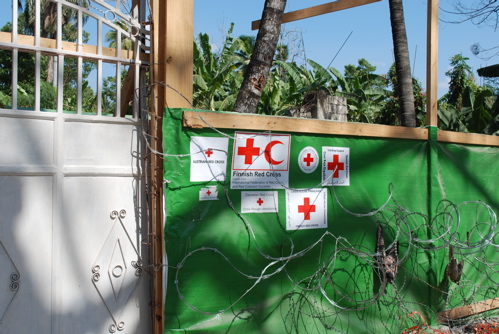
Haiti's President Rene Preval returned to Port-au-Prince early this week from meetings with President Obama and blasted US criticism of the Haitian government as "arrogant." At issue is a 2009 State Department Human Rights report that says, "corruption remains widespread in all branches and all levels of government." It was curious timing for the report's release since the government infrastructure in Haiti was destroyed in the January 12, 2010 earthquake. Relief efforts are limping along. There are thousands of foreign NGOs on the ground, but no overall organized effort to distribute aid. Compounding the problem is the fact that IDP camps are springing up overnight, and rural areas face a different set of problems than those faced in the city of Port-au-Prince.
There is no doubt that Haiti was riddled with corruption long before the January 12 earthquake that claimed up to 300,000 lives -- a count certain to go higher according to some observers here. But it is perplexing that the State Department would choose to beat up its relief recipient while Haiti is down for the count. As a result of this very public slap in the face, Preval is demanding that his presidency have veto power over donor-funded reconstruction projects. What the Haitian people do not need is tension between relief partners, but tempers and frustrations are ramping up here.
There is plenty of blame and criticism to go around, but that being said, the humanitarian situation is so dire it seems as if there may be no comprehensive solution. Aid workers who have been here for years are bitter and angry. It is all but impossible to come to an understanding of what is wrong and what is right about aid distribution here.

The United States is Haiti's biggest donor and the country is literally overrun with NGO's. Duval has suggested that they simply stop coming. Their effectiveness here is questionable from what we have observed. There are an estimated 60 to 80 foreign NGOs in the Leogane area alone. They have erected a United Nations' guarded compound and there is no doubt that the IDP camp in central Leogane is well run and supplied -- for now. Walk through the sugar cane fields to the highway that cuts around the main road and you will find the "City of Ranyon," Creole for the "worn out city." It is almost within shouting distance of the main NGO compound and the residents do not have tents. Structures are built out of mats and anything else that can be used, but are not waterproof, and the rains are weeks away.
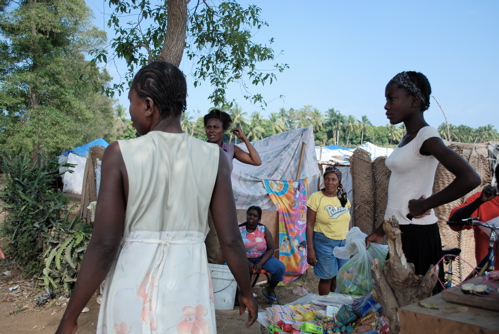
Common medical complaints include diarrhea, diabetes, nervous disorders, fevers, headaches, skin and vaginal infections and anemia. Doctors without Borders visited the tented camp across the road from the "City of Ranyon", and treated three patients, according to camp coordinator Jean Marie.
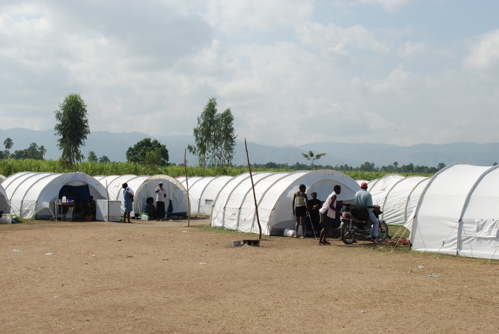
He asked for tents for the 250 families living in "Rayon" fifteen days ago.
Medical supplies for both camps include several cluttered shelves of common bandaging materials and antiseptics.
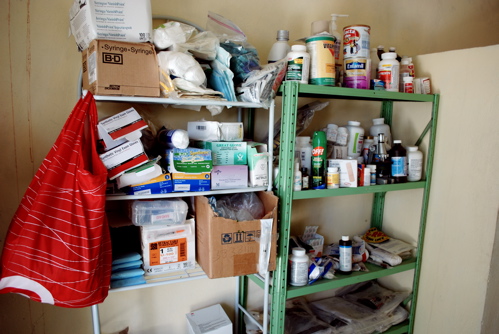
The good news is that Franklin Graham's organization, Samaritan's Purse, has installed a water well and is building latrines for the 2500 people camped here. Leogane is in ruins, but camp residents can still return to their farms to pick vegetables and fruit.
Canadian Corporal Eric Poirier did not hold back when asked about the humanitarian aid situation in Leogane proper. His unit is on guard duty there.
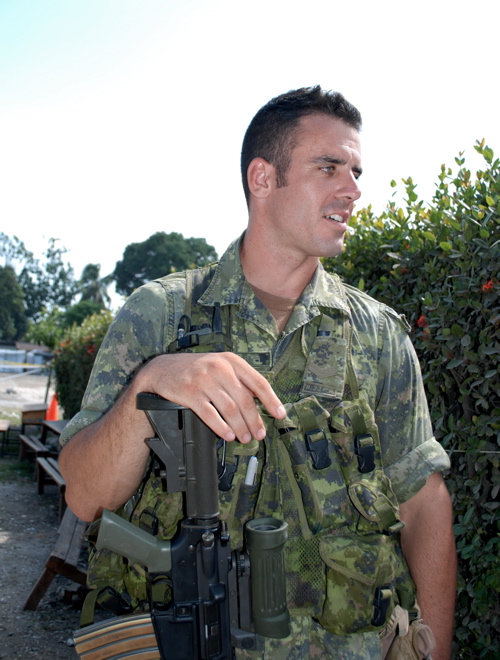
"All of the resources are in the wrong place," he said. "These people are used to getting one meal a day and they are being fed three times a day by the NGOs. Meanwhile people in other areas are going hungry."
Poirier says the local Haitian officials are skimming 70 percent of the aid dollars coming in. Leogane has not received 25 percent of targeted aid.
This is not the only time we have heard this story. A relief worker who is working in Jacmel told us he was imprisoned for refusing to turn over 50 percent of his organization's funds to a local Haitian official. The aid worker is married to a Haitian woman and has been living here for eight years. He says it is getting to be impossible to fly relief supplies into Jacmel because of extortion by Haitian officials.
When the Haitian District engineer in Leogane, Ruddy DuViviers, saw us talking to the Canadian soldier, he pulled us aside and accused the NGOs of being "Water Mafia." DuViviers said the NGOs were charging the population for water. That was a pretty heavy counter-charge, so we checked it out.
DuViviers was lying. The Spanish Red Cross has installed a sophisticated well, chlorine filtration, and a distribution system that was providing pure drinking water for the camp for free. The French organization, ACF, has a less sophisticated system down the road. All of the water is free.
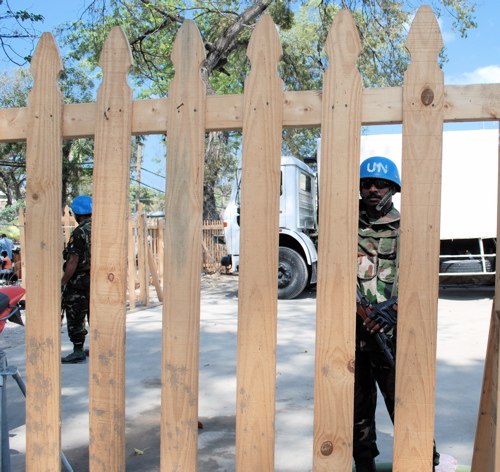
There is a curious situation in Leogane that has the UN guarding two water bladders from access by the locals. Haitian officials say it is flooding the street when they use it. 90 percent of Leogane is flattened, so it is hard to fathom why some water in a rubble strewn, dusty street can be a problem.
There are two parallel roads going south to Jacmel from Leogane. Less than an hour's drive south lays the village of Macassin. Macassin is on the road less traveled. It has been totally bypassed by humanitarian aid except for 1200 blue tarps that shredded in the last windstorm. The surviving tents are leaking like sieves and the rains have not hit with full force yet. Macassin is only a small example of the scope of this disaster, which is truly biblical.
The US company, Tarpaflex, supplies most of the blue tarps in the Western world. The majority of all tarps are made in China. We found donated blue tarps, made in China, on the black market in Port-au-Prince and got a shot of the packaging.
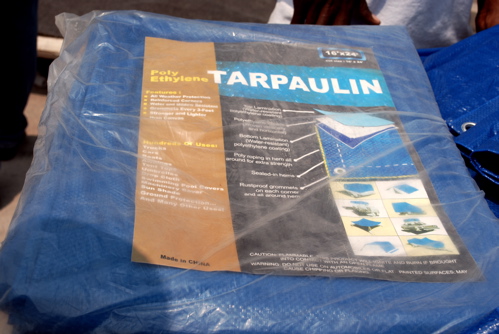
Tarpaflex says on its own website that blue tarps would not be a good choice for housing.
In most cases, blue tarps are used just a few times and are easily replaced with just a few dollars. The downside to having traditional blue tarps rather than heavy duty white tarps is that they absorb sunlight and weaken; they easily tear and are not good for transporting or covering and pulling extremely heavy, pointy, or otherwise difficult objects.
Here is a short slideshow about the people in Macassin and the problems they are facing. Turn on the "caption" function to get more description.
On March 11, a USAID flight delivered 750 rolls of plastic sheeting to Haiti. To date, USAID/OFDA has provided 15,480 rolls of plastic sheeting to meet post-earthquake shelter needs, "benefiting approximately 774,000 people," according to government reports.
The ongoing distribution of USAID/OFDA-funded plastic sheeting supports Shelter Cluster efforts to provide shelter materials to approximately 240,000 households before the likely June onset of the hurricane season.
Try living under plastic sheeting and blue tarps during a hurricane. We took this video on Highway 1 north of Port-au-Prince.
Population movement maps are generated on a daily basis, but they only show numbers based on use of government transportation, and do not include people leaving Port-au-Prince using private transport.
The UN World Food Program has "reached" 434,000 individuals since March 6, but does not give any specifics on numbers of meals. They will pull out on March 31.
Seeds for bean, maize, sorghum, pigeon pea, and peanut crops are either being eaten by starving families or being sold. There is concern that rural production of food crops will not meet the needs of the populations that have fled Port-au-Prince.
In total, the United States has contributed nearly $770 million in earthquake response funding for Haiti to date.
It is difficult to see where this aid has been utilized.
I wrote the other day that Port-au-Prince is like Mad Max on steroids. It is getting worse, no matter how much rubble is gradually removed from the streets. There is a feeling of every-man-for himself and it will only get worse when the WFP stops distribution on March 31 and there are not enough new donor organizations to coordinate food distribution. There is some food in the countryside, but if people eat the seeds they are supposed to be planting there will be serious shortages.
I wish I had solutions. Everyone here does. All we can offer are small snapshots of this ongoing disaster.
USAID estimates put the total number of displaced at between 1,200,000 to 1,290,000 as of March 12. This includes 700,000 displaced in the Port-au-Prince area alone.
Cross post with LA Progressive
